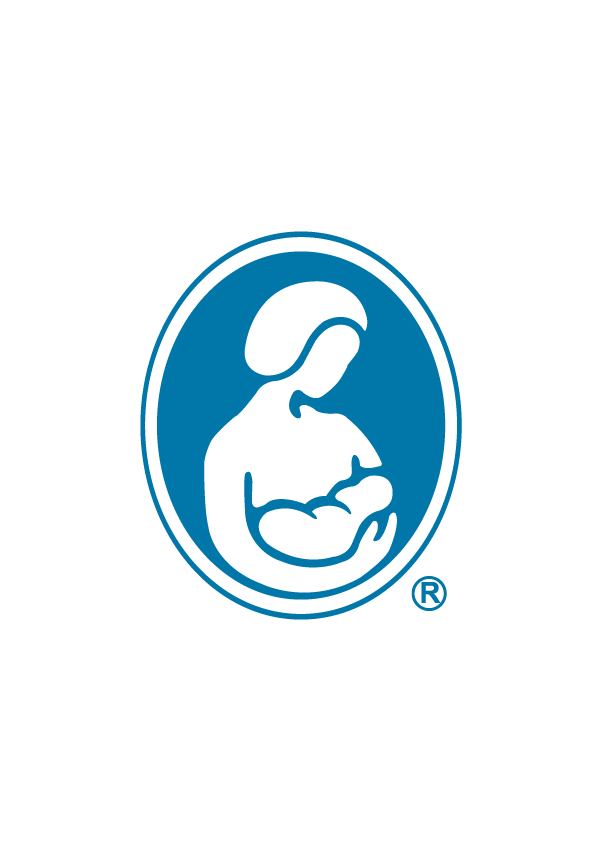


您可能想知道在怀孕期间需要做什么来为母乳喂养做准备。事实上,您的身体早知道该做什么。
怀孕期间分泌的激素会让您的乳房做好准备,以便在宝宝出生后就有奶可以吃。
因此,您能做的最佳准备是提前获取准确的信息,以及找到能够提供支持和鼓励的人。


怀孕期间,您的身体会经历许多变化。您可能会注意到以下变化:
·您的乳房增大且会一触即痛。
·您的乳头颜色变深,并对触摸很敏感。
·您可能会注意到几滴初乳(早期的乳汁)从乳房中溢出来。
用清水清洗乳头就可以,尽量避免在乳头上使用肥皂,它们会把皮肤上的天然润滑剂洗掉。


怀孕时,为了自己和宝宝,健康的饮食非常重要。建议吃各种各样的纯天然食品。
您不需要吃任何特殊的食物,也不必因为没有每天均衡饮食而感到担忧。身体产生的乳汁并不取决于饮食。母乳会从体内的储备中获得所需的营养物质。
然而,吃种类丰富的健康食物对您的健康很重要,也为您的家庭成员树立好的榜样。


舒适的哺乳内衣有许多不同的选择。需要考虑的因素有:
✦舒适性——有许多无钢圈的内衣可以提供足够的支撑。如果您更喜欢有钢圈的内衣, 确保钢圈不会压迫您的乳腺组织。
✦便利性——理想情况下,文胸的任何扣环都可以单手操作。
✦轻薄透气的面料——当杯罩部分向下折叠时,应该很容易让婴儿喝奶。(由较厚织物制成的定型内衣体积很大,向下折叠时,可能会挡住宝宝,从而使宝宝贴近乳房变得困难。)
✦有扩张空间——等您的奶“下来”后,您的乳房会增大一个罩杯或更多。
✦哺乳背心——许多人发现这是个舒适的胸罩替代品。
✦购买时间——您可能想在妊娠最后几周购买1或2件胸罩,然后等分娩后几周再购买更多。大多数乳房会在三个月左右停留在比平时稍微大一点的罩杯。


早期的肌肤接触使学习母乳喂养更容易。有关肌肤接触更多信息,请参见 https://www.llli.org/breastfeeding-info/skin-skin-care/ 。
您不需要穿特殊的衣服!在家里,开衫或睡衣可以让妈妈很容易与宝宝进行肌肤接触。
需要出门的时候,也有很多选择。世界各地的母亲穿着各种各样的服装进行母乳喂养。当穿着两件套时,上衣可以从底部掀起。或者如果领口足够大,可以将其从顶部拉下。
有些人喜欢穿轻便的开衫式羊毛衫、解开扣子的衬衫或带拉链的运动衫。这些衣服可以让您在给宝宝喂奶时,同时遮住其他身体部位。
您可以决定什么最适合您。您可以选择哺乳衣,但是许多人在没有任何特殊服装的情况下也舒适地母乳喂养了很多年。


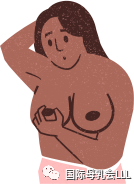
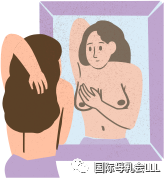
乳头有各种形状和大小,每一种都非常适合母乳喂养。乳头的直径大小和长度因人而异。
有些乳头在平时和触摸时会突出。有些乳头在平时看起来扁平,但触摸时会突出。也有些乳头即使被触摸也仍然扁平。
有些乳头在平时看起来是凹陷的,就像缩在乳房里面一样。然而,当乳晕(乳头周围的深色区域)被轻轻挤压到乳头基底部后约2.5 cm处时,乳头就会挺出来。
当轻轻挤压乳晕时,真正的凹陷乳头不会突出或外翻,甚至会回缩得更多。如果您认为您的乳头确实凹陷,请在怀孕时咨询医护人员。如果您的婴儿含乳困难,请考虑在产后咨询国际认证泌乳顾问(IBCLC)。
一些乳头凹陷的女性担心这是否会影响母乳喂养。好消息是,婴儿可以非常成功地含着凹陷的乳头进行母乳喂养。而且通常不需要特别的准备,婴儿有几种自然反射可以帮助他们在没有突出的乳头的情况下也能含乳。
有时,哺乳期妈妈会被告知,因为乳头凹陷她们应该使用乳头保护罩(乳盾)或奶瓶喂养。但目前没有证据支持这一点。
无论是否存在乳头凹陷,一旦婴儿接触过质地较硬的硅胶奶嘴,都可能使他们更难直接含住妈妈的乳房。
这种情况下,建议采用半躺式哺乳法,这种姿势能让婴儿更容易含乳。同时让婴儿花大量的时间与妈妈肌肤接触。
如果有需要,您可以帮助您的宝宝。当婴儿很好地含乳时,他们通常能够将乳头深深地吸进嘴里。随着时间的推移,乳头和乳晕的组织会被拉伸。
偶尔,当乳头被拉出时,牵拉感可能会有点不舒服。这种不适通常会在几周内消失。
如果宝宝接触过人工奶嘴(包括安抚奶嘴),并且难以含乳,可以使用一些技术来帮助拉出凹陷的乳头。更多信息请参见“乳头凹陷和乳头扁平” https://www.llli.org/breastfeeding-info/inverted-flat-nipples/。(参考阅读:乳头凹陷咋进行母乳喂养?)


父母在为母乳喂养做准备时,可以做的一件事情就是练习用手挤奶的技巧,甚至还可以保存一些初乳。当需要的时候,这些初乳可以给刚出生的婴儿吃。
初乳是女性身体在怀孕20周左右开始到产后三四天分泌的“早期乳汁”。用手挤奶需要练习才能熟能生巧。
如果您一滴奶也没有挤出,也没必要担心,这并不要紧。怀孕期间是否能挤出初乳并不决定宝宝出生后您将生产多少母乳。
不过,即使您没有挤出乳汁,提前了解您的乳房并练习用手挤奶仍然很有帮助。


在怀孕期间,了解您的身体和宝宝的身体是如何工作的可能会有所帮助。您可以了解到母婴该如何共同努力来获得成功的母乳喂养体验。
可以通过“国际母乳会-LLL”微信公众号、视频号、以及我们其他社交媒体平台(我们开通抖音小红书B站等社交媒体了!)或访问www.muruhui.org,提前了解母乳喂养相关资讯,比如:
❶ 在最初几小时和几天里的母乳喂养 (我们的乳房是需要“催”了才能产奶的吗)
❷ 建立您的奶量


怀孕期间参加国际母乳会的月度聚会是为母乳喂养做准备的最佳方式之一。您可以遇见其他哺乳父母,看到婴儿如何母乳喂养,提出您的问题,并听到与您有相似经历的父母的意见。
如果遇到问题,国际母乳会的哺乳辅导能够为您提供大量信息和支持,这些对您都将非常有帮助。
您可以通过关注我们的微信公众号或访问官方网站(www.muruhui.org)来及时获知聚会信息。欢迎所有的准妈妈和家人一起来参加我们的聚会!

PREPARING TO BREASTFEED
You may be wondering what you need to do during pregnancy to prepare for breastfeeding or chestfeeding. Actually your body knows what to do.
The hormones produced during pregnancy prepare your breasts to make milk once your baby is born.
The best preparation is accurate information and people who can provide support and encouragement.


During Pregnancy
Your body goes through a lot of changes during pregnancy. Here are some changes you may notice.
◆Your breasts will likely feel tender and get bigger.
◆Your nipples may get darker and may become sensitive to touch.
◆You may notice drops of colostrum (the first milk) leaking from your breasts.
It is helpful to avoid using soaps on your nipples. They can strip the skin of its natural lubricants. Plain water is all you need.


What to Eat
When pregnant, it is important to eat healthy food for yourself and your baby. Think about eating a variety of foods in as close to their natural state as possible.
You do not need to eat any special foods or be concerned if you don’t eat a balanced diet every day. The milk your body produces is not dependent on your diet. Your milk gets the right amount of nutrients from what is stored in your body.
However, continuing to eat a variety of healthy foods is important for your health and role models healthy eating for your family.


Choosing a Nursing Bra
There are many different options for comfortable nursing bras. Some considerations are:
✦Comfort —— There are many soft-sided bras that provide adequate support. If you prefer a bra with underwires make sure the underwires do not dig into your breast tissue.
✦Easy access to the breast —— Ideally any clasps should be manageable with one hand.
✦Light, breathable fabrics —— When the cup fabric is folded down it should be easy to tuck out of baby’s way for feeding. (Molded cup bras are made of thicker fabric that can be very bulky. When folded down they can make it difficult for baby to get close to the breast.)
✦Room for expansion —— Your breasts may increase by a full cup size or more when your milk comes in. Nursing tank top – Many people find these comfortable alternatives to a bra.
✦Time your purchases ——You may want to buy 1 or 2 bras during the final weeks of pregnancy and then wait until a couple of weeks after the birth to purchase more. It’s helpful to know that most breasts settle into a moderately larger size by about three months or so.


Clothing Options
Skin-to-skin contact in the early days makes learning to breastfeed easier. For more information see https://www.llli.org/breastfeeding-info/skin-skin-care/.
No special clothes are needed! Around the house, wearing a shirt or nightshirt that opens at the front allows parents to easily hold baby skin to skin.
When it’s time to get dressed to go out, there are lots of options. Mothers and parents all over the world breastfeed in a wide variety of outfits. When wearing two-piece outfits, tops can be lifted from the bottom. Or If the neck opening is wide enough, they can be pulled down from the top.
Some people like to wear a light cardigan-style sweater, unbuttoned shirt, or zip-up sweatshirt. It can cover the side of your body while your baby is feeding.
You can decide what will work best for you. Specialty breastfeeding clothes are available but many people breastfeed comfortably for years without any special clothing.


Nipple Size and Shape
Nipples come in all shapes and sizes. Almost all are perfectly fine for breastfeeding. Nipples can vary in diameter from small to large. They can also vary in length from short to long.
Some nipples protrude while at rest and when touched. There are nipples that appear flat at rest but protrude when touched. Others remain flat even when touched.
Some nipples appear to be inverted at rest, like they are sunken into the breast. However, when the areola (dark area around the nipple) is gently squeezed about 2.5 cm behind the base of the nipple, the nipple becomes erect.
Truly inverted nipples do not protrude/evert and may retract even more when the areola is gently squeezed. If you think you have truly inverted nipples, consult a healthcare provider while pregnant. Consider seeing an International Board Certified Lactation Consultant (IBCLC) after the birth if your baby is having difficulty latching.
Some women with inverted nipples wonder if this will impact breastfeeding. The good news is that babies can latch onto inverted nipples and breastfeed very successfully. Usually no special preparation is needed. Babies have several natural reflexes that help them to latch onto the breast even without a protruding nipple.
Sometimes nursing parents are told that because their nipples are inverted that they should use a nipple shield or bottle- feed. There is no evidence to support this.
Once babies are exposed to a firm silicone nipple it can make it more difficult for them to grasp their parents’bare nipples whether they protrude or not. Instead, the recommendation is to use the laid- back feeding position and allow baby a lot of skin-to-skin time. In this position it’s easier for babies to latch.
You can help your baby, if needed. When babies are latched well, they are usually able to draw the nipple deep into their mouths. Over time the tissues of the nipple and areola are stretched.
Occasionally, the tugging sensation may be slightly uncomfortable, as the nipple is drawn out. This discomfort usually passes within a few weeks.
If your baby has been exposed to artificial nipples, including a pacifier, and is struggling to latch well onto the breast, there are techniques that can be used to help draw out an inverted nipple. For more information see “Inverted Nipples and Flat Nipples” https://www.llli.org/breastfeeding-info/inverted-flat-nipples/.


Expressing Colostrum Before Baby Arrives
One of the things that parents can do to prepare for breastfeeding is practice the technique of hand-expression. Even small amounts of colostrum can be saved and given to baby in the early days, if needed.
Colostrum is the “early milk” that a pregnant body begins to produce around the twentieth week and up until the first three or four days after a baby is born.
Hand-expression takes some practice. There is no need to be concerned if you don’t get any drops at all. That’s okay. Whether or not you are able to remove any colostrum in pregnancy does not reflect how much milk you will make once your baby arrives.
Even if you express no milk, it is helpful to get to know your breasts and practice hand-expression before the birth. (See “Prenatal Colostrum Expression” https://www.lllc.ca/sites/default/files/Prenatal+Colostrum+Expression_3.pdf) or (Prenatal Colostrum Expression)


Check out LLL’s Prenatal Breastfeeding Information
During your pregnancy, it can be helpful to learn about how your body and your baby’s body works. You can learn how the two of you can work together to have a successful breastfeeding experience. Visit our homepage www.muruhui.org or follow us in our different social media accounts to learn more about breastfeeding (Start New Social media):
❶ breastfeeding in the early hours and days;
❷ Establishing your milk supply;


Attend LLL Monthly Meetings
Attending La Leche League meetings during pregnancy is one of the best ways to prepare for breastfeeding your baby.
You can meet other nursing parents, observe babies breastfeeding, ask your questions and hear from others who have been on the same journey as you.
If questions arise, being able to call a La Leche League Leader who can provide you with good information and support can be very helpful.
To access the LLL meeting calendar please go to (Meetings of This Week).

END
翻译:LLL Canada加拿大母乳会
审稿:Julia,Lynn, Marien
编辑:幸宝
微信公众号|视频号|小红书|抖音|新浪微博|今日头条|哔哩哔哩|腾讯视频|优酷
搜索关键字“国际母乳会”
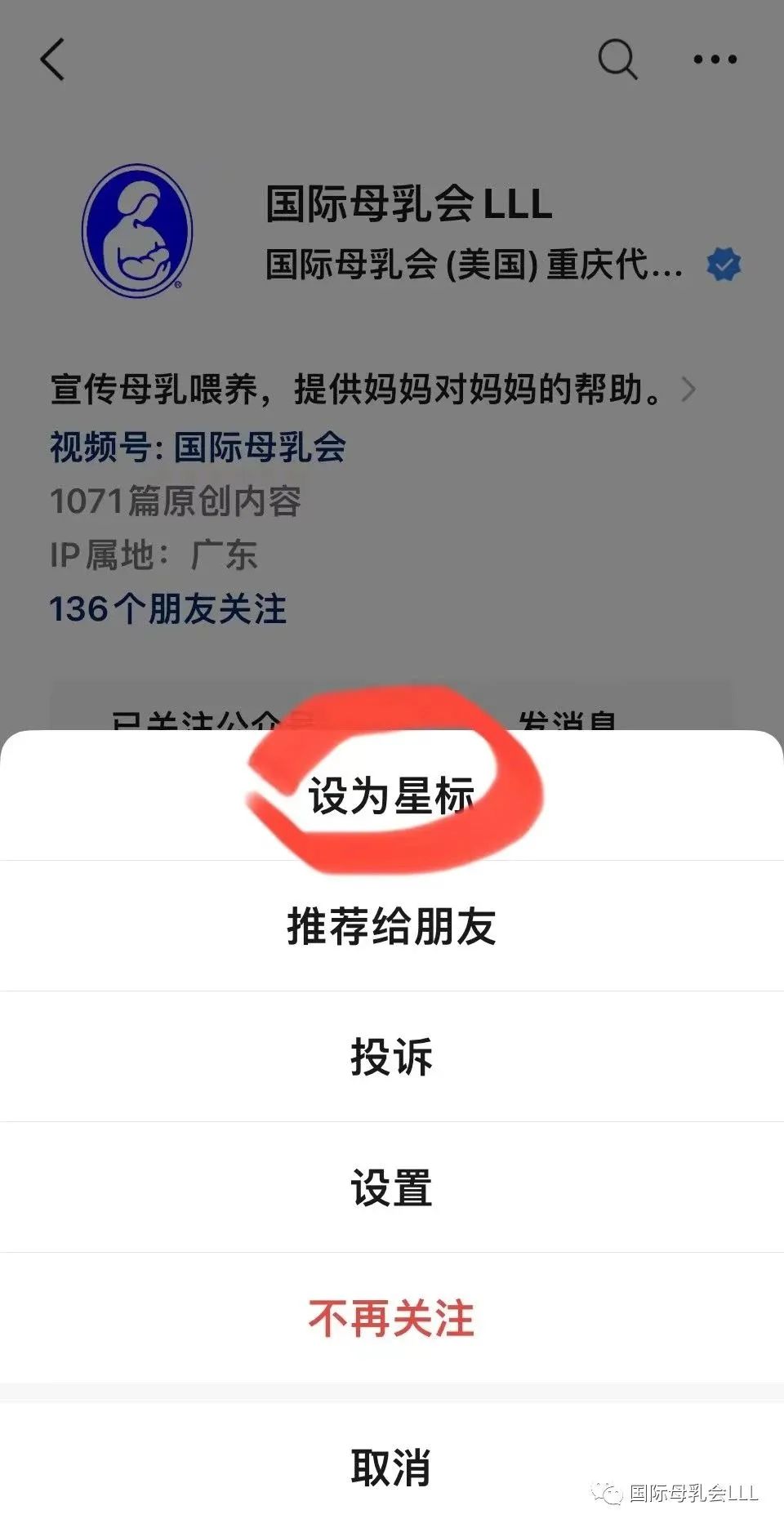

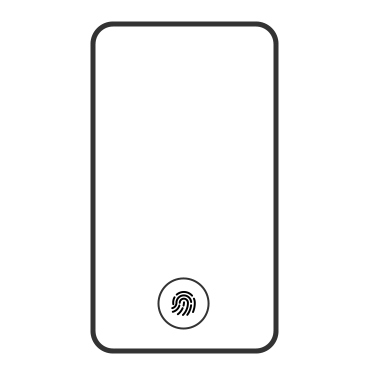
中国移动手机和宽带用户可访问:
muruhui.com 或muruhui.cn
获取更多资讯
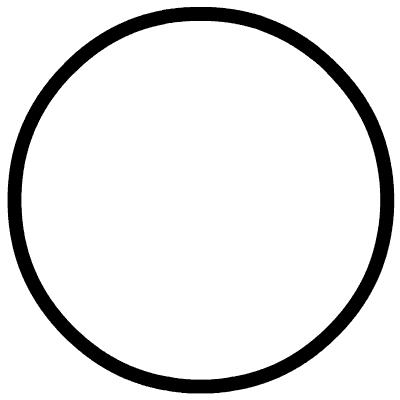
本篇文章来源于微信公众号: 国际母乳会LLL
